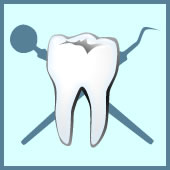The Ten Signs of Teething !
Teething is one of the significant milestones of your baby’s development. Memories of your baby's first big toothy grin will stay cherished forever. Some babies hardly appear to have any trouble at all and are boasting their first teeth before you know it, but for others it can be a more uncomfortable time, causing distress to both you and your baby.
Just like adults, all babies deal with pain differently. As a result, some will have an easier time with teething than others. However, most babies will have grouchy and irritable periods!
The first signs of teething usually begin a few months before the first tooth appears, so you will need to look for particular symptoms to ensure that the symptoms you notice are truly teething-related. While most parents generally agree that some or all of the symptoms below occurred around the time of teething, it is still recommended that you check with your pediatrician to rule out other possible causes for the symptoms, especially if you’re baby is running a fever (temperature above 39C [102F]) and/ or appears lethargic and unwell.
1. Irritability: As the new tooth rises closer to the surface your baby’s gums may become increasingly more sore and painful, leading to fussiness and crying.
2. Drooling: From three to four months of age you may see your baby start drooling more often than normal. Teething stimulates drooling, which may be worse with some babies than others.
3. Coughing: The increase in saliva can cause your baby to occasionally cough or gag. As long as your baby shows no signs of a cold or flu and does not run a high fever, this is noting to worry about.
4. Chin rash: If your baby is a heavy drooler, the constant contact with saliva may cause the skin around the chin and mouth to become irritated. Gently wipe your baby’s mouth and chin periodically throughout the day to help prevent chapped skin and rashes.
5. Biting & gnawing: A teething baby will gnaw and gum down on anything. The counter pressure from biting helps relieve the pressure from under the gums and temporarily numbs the pain. Teething aids designed specifically for babies are safe and effective.
6. Cheek rubbing and ear pulling: Pain in the gums may spread to the ears and cheeks particularly when the back molars begin coming in. This is why you may see your baby rubbing their cheeks or pulling at their ears. However, keep in mind that pulling at an ear can also be a sign of an ear infection, especially when accompanied by a fever.
7. Diarrhea: Most parents usually notice slightly looser bowel movements when a baby is teething. A recent study done by the Children’s Hospital in Australia found this to be the most common symptom of teething, yet many doctors still disagree and discount diarrhea as a symptom of teething. The most likely cause of diarrhea during teething is the extra saliva swallowed, which then loosens the stool. Report any diarrhea that lasts for more than three bowel movements to your doctor.
8. Low-grade fever: A fever is another symptom that doctors are sometimes hesitant to directly link with teething. Many parents however find their baby gets a low-grade fever while teething. Notify your doctor if the temperature rises above 39C (102F) or if the temperature remains elevated for more than 2 days.
9. Not sleeping well: You may find your child wakes more often at night. Most parents agree that night waking occurs more frequently when the molars are coming in.
10. Cold like symptoms (runny nose, etc.): Some parents find that their baby displays cold-like symptoms when teething. Runny noses, coughing and general cold symptoms are believed to be a result of frequent hand-to-mouth movements in an attempt to alleviate the pain. Notify your doctor if cold-like symptoms occur for more than 3 days and do not improve on their own.
The process of teething frequently follows hereditary patterns, so if the mother and father teethed early or late, your baby may follow the same pattern. On average the first tooth comes in during the seventh month, although it can arrive as early as three months, as late as a year, or in rare cases even earlier or later.
In total there are twenty primary (first) teeth. The full, adult set of teeth comprises of thirty-two permanent teeth. Most children have a full set of primary teeth by the time they are around two or three years old. These primary teeth usually last until about the age of six, when the teeth that were first to appear become loose and fall out as the second teeth begin to push through the gums. The primary teeth continue falling out until roughly the age of twelve. Again, these ages mentioned above are only averages and your child may follow an earlier or later pattern.

No comments:
Post a Comment